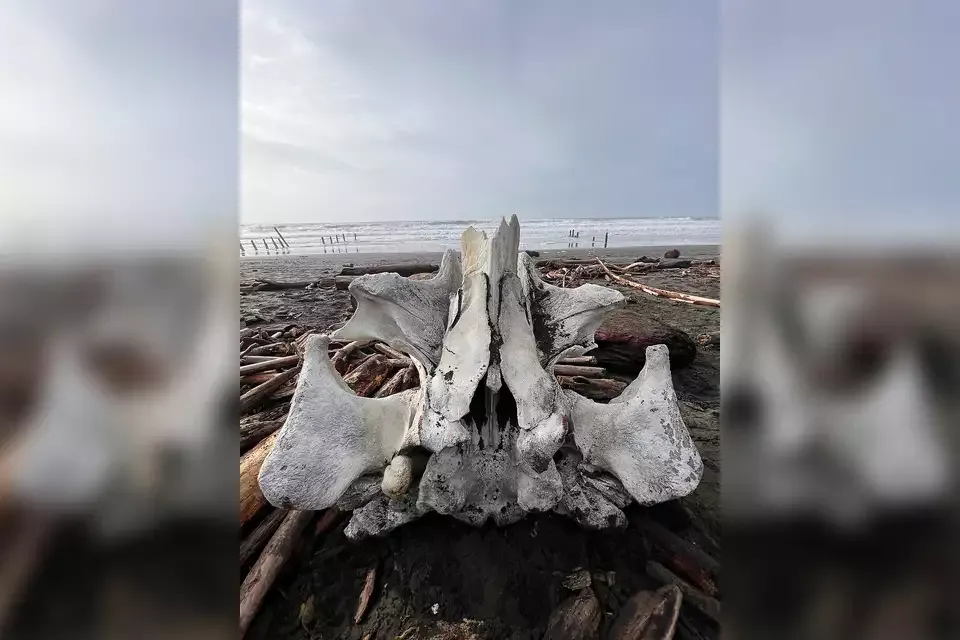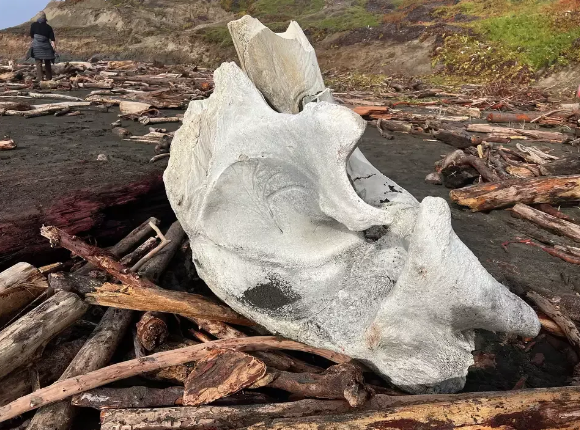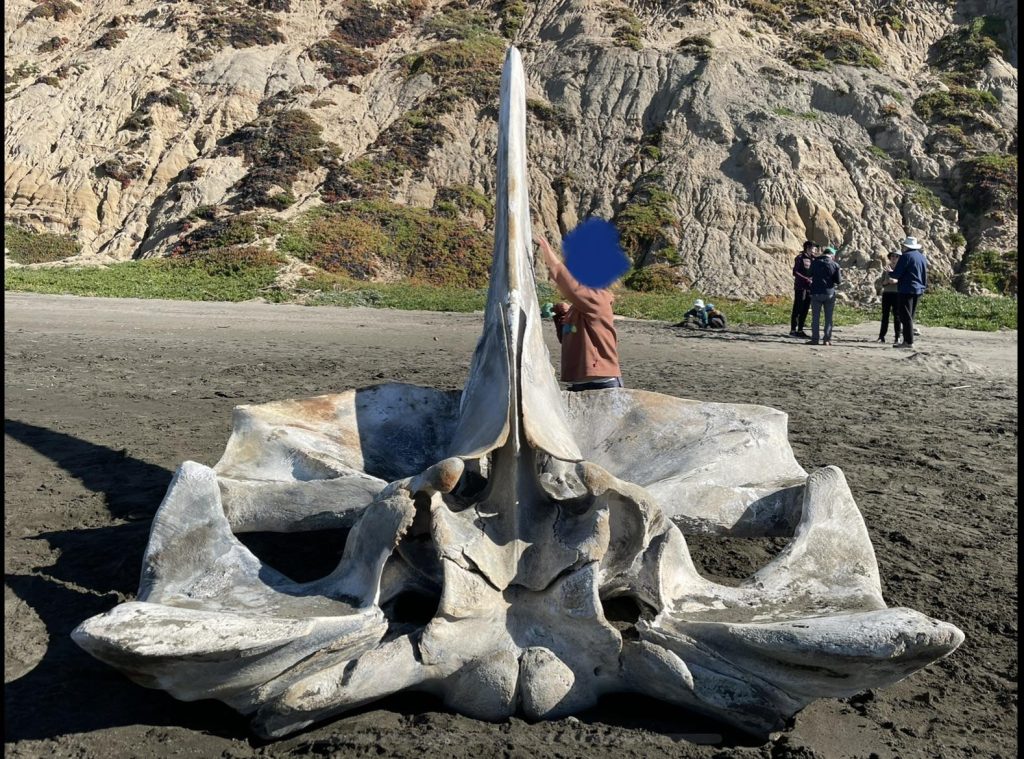
The Second Massive Skull That Has washed Up on a San Francisco, California Beach
“My roommate and I were walking our dogs on the beach, observing all the driftwood that had washed up from the storm, when I saw something that caught my eye,” Teichmann told SFGATE in an email. “From my vantage point, it looked like some large white item peeking through all of the scattered branches.”
After approaching the object and taking a few photos, she thought it was maybe part of a whale vertebra — and after reviewing the images, Bay Area researchers confirmed she wasn’t too far off the mark.

“That’s a braincase of a modern gray whale, Eschrichtius robustus,” confirmed Robert Boessenecker, a research associate at UC Berkeley’s Museum of Paleontology. Their narrow, distinctive skulls make them easy to identify, and though these whales haven’t been around for very long, Boessenecker told SFGATE, they have a tumultuous history.
By the late 17th or early 18th century, Boessenecker said, gray whales living in the western North Atlantic had already been driven to extinction.
They have lived along the West Coast for only the past 1.5 million to 2 million years, he explained, and were nearly driven to extinction there as well by whalers like Charles Melville Scammon, an American sea captain who discovered their birthing grounds in Baja California in the mid-1800s. The area is still referred to as “Scammon’s Lagoon,” according to the independent science library Linda Hall Library.
For more than a decade, Scammon continued to hunt these whales along the California coast

Though whaling is now illegal in the U.S. and has been since the 1970s, the gray whale population is declining, and scientists are scrambling to figure out why.
The eastern North Pacific gray whale population peaked at nearly 27,000 in 2016, but dwindled to about 16,000 following an “unusual mortality event,” the National Ocean and Atmospheric Association said. Since 2019, more than 300 gray whales have become stranded along beaches in the U.S., NOAA data shows. Necropsies revealed that several of the deceased whales exhibited signs of emaciation, but more research still needs to be done, the NOAA said.

These mortality events have occurred in the past, and NOAA seems to be optimistic that these massive sea creatures will return. That may mean that discoveries like Teichmann’s will continue to be uncommon. As she told SFGATE, “I take my dog to Fort Funston fre𝚚uently and hadn’t ever seen something like that before.”




